We all know that the golden rule to content marketing is “provide value.” Many people don’t realize this is just the first part of a two-part rule. The second part is “deliver your content to the people who will find it valuable.”
With the ridiculous amount of information and resources available on the web today, you now have to hand deliver your information to your audience.
We (at Mention) realized this when the content we were producing was seeing little traction. We knew it was good because those who read it told us so, but crickets…
We also knew that distribution was the solution to our problem, but having been so focused on production, I was nearly clueless as to how to get started. I needed some guidance, so I picked a few brains and began testing.
Three months after establishing and executing a stronger distribution strategy with specific tactics (covered below), we saw a 173% increase in monthly company mentions online, and a 200% increase of monthly blog visits. Here’s what we learned along the way.
1. Great content can fall on non-existent ears
Why distribute? Because simply creating good content isn’t enough. Yes, SEO best practices help drive relevant traffic to your content, but SEO shouldn’t be the only tool in your content toolbox.
The people who discover your content through organic search will likely find your content helpful; however, the chances of them revisiting or sharing it after collecting the information they needed seems slim. You have to be proactive in reaching them early on, maybe even before they know they need your product or service.
You’ll notice that between April 11 and May 11, visits to our blog were not at all steady. The three spikes at the end of April were the results of two blog posts that happened to perform especially well. One of them — “The Five Best Front End Developer Tools”— continues to be our most popular piece of content to date.
Although the spikes are great, drop off is an issue. Our content should be evergreen with an extended shelf life. Recognizing that the information in these posts was valuable to some people out there, we began exploring options for repurposing and redistributing it for extended reach.
2. There are a ton of distribution options; success requires selecting those that will reach your audience
First, it’s important to understand that there are three types of distribution channels —owned, not owned (earned), and paid. For simplicity’s sake (and because I have little experience with paid), this post only covers the first two.
Check out this B2B Content Marketing Framework that Clement Vouillon developed.
Both owned and earned distribution channels are important — both produce different results, and both require different levels of effort.
Building your own subscriber list is clearly more work, but it’s also invaluable. These people are your community, they’ve opted in to your communications and are likely to be your biggest brand advocates. External distribution vehicles, however, are going to provide quicker wins and give you access to a bigger audience that you may have not otherwise reached.
Below are the channels that we’ve begun using and are exploring. Of course, there are many more out there in both categories, you just have to do the research to find the right ones. These channels were identified for our audience — anyone interested in media monitoring, social media, content marketing, inbound marketing, reputation management, and sales.
We’ve found that each of the external distribution channels (aka amplification networks) have their own set of requirements and best practices, for example:
GrowthHackers – Really contribute to the community. Find opportunities to comment with insight or ask questions, share valuable content that’s not yours, and upvote the content you’ve found helpful.
Growth Hub (previously Inbound.org) – The hosts are very grateful for contributions, and the community is generally friendly. There’s a lot of overlap with GrowthHackers, so I suggest picking one of the two for each piece of relevant content.
Hacker News – Very noisy and almost impossible to predict success (landing on the homepage), but if you do, you’ll see a huge spike in traffic. Startup success stories and articles regarding investment and raising rounds seem to do well here.
Product Hunt – Make sure you only post a real product, or you won’t even be considered.
reddit – Our tech posts do extremely well on reddit. The site generates a ton of traffic. Establishing a developer community is important to us as a tech startup. However, these are probably not the people that are going to buy our product. Be sure to select the subreddit that’s relevant to you.
Medium – Medium offers a built-in community, but you have to build a readership to get the full potential from the site. We’ve copied Buffer’s approach and created a collection of articles by our team and friends.
List.ly – I’ve only begun playing with List.ly, but also see great opportunities here for community and audience building. Provide value and promote your lists.
3. Goals are important
As with producing valuable content, you should know what your goals are before selecting which distribution channels to use for each piece of content. Ask yourself:
- Who are you trying to reach? Your own community or a broader audience?
- What do you care most about — visits, signups, conversions, social shares, followers, or brand awareness?
Different distribution channels meet different goals. It’s important to define these goals first, then do the research necessary to determine which channel is the best fit. Ask someone in your network with similar goals what has worked for them. Pay attention to what content your audience is sharing and where they are sharing it. Media monitoring and social listening can be useful for this.
Once you’ve established goals, you have something to measure against. Try different channels and see which works best for which goals. Test and iterate until you’ve found what works for your content mix. This is how we’ve discovered that reddit works well for our tech posts, GrowthHackers works well for inbound-related content, and Twitter is our strongest social network.
4. Have a process in place
For me, a process is more about always having my distribution channels in front of my face after publishing a piece of content. After each post (or SlideShare or webinar or podcast) goes live, I check our strategy doc with every possible distribution channel listed and select the ones that are the best fit. Then I get to work immediately, dedicating an hour or so of uninterrupted time to distribution only. If I don’t approach distribution with this process, it simply won’t get done.
I’ve tried planning in advance, assigning channels to headlines, but that did not work for me, as my writing always seems to morph into something at least slightly different after getting started. Find the process that works best for you.
5. Research distribution channels first, write later (measure, or waste your time)
After throwing some spaghetti against the wall, we found three approaches to researching what distribution channels work best for our content:
- Looking at referral sources in Google Analytics
- Monitoring keywords to discover what (and where) conversations are happening
- Looking at what content is trending on the forums our audience is on
The first approach seems self-explanatory, but it’s not a matter of rinsing and repeating. Yes, you should continue posting or syndicating to the blogs and forums you’ve seen success on. You should also take a look at other channels that have a similar audience. This way you can extend your reach and provide information where it will be found valuable.
Now that I know thenextweb.com and inbound.org have lower bounce rates, I’ll focus on those channels, as well as ones similar to them.
Use a media monitoring tool to see what conversations are happening around key terms related to your offering. What else are these people talking about in relation to this term? What questions do they have? What type of comments are they leaving on blogs? What’s not being talked about that would be helpful? Where are they having these conversations? This is an ideal way to reach an audience you may have not otherwise discovered on the black hole that is the Internet.
Take a look at the forums and groups you’ve identified as relevant distribution channels. Which posts are being discussed the most? Which are seeing the most upvotes? Use these as inspiration during topic ideation, then write a post (or webinar or podcast) from your unique perspective.
6. Email is way more effective than people give it credit for
We have more than 750,000 free and paying customers. This is our internal community, and each one of these people is on our email list. With this in mind, it has become clear that email is the most effective way to deliver company news and product updates to our customers. Every time we send a newsletter, we see a significant increase in visits. More importantly, visits from our customers. You can even go a step further and leverage this community to use email as a growth hack.
For example, on August 6 we sent a big newsletter announcing several product updates:
You’ll see that August 6 saw the highest traffic so far in August (as of August 18):
We also saw an open rate of 20% and a click-through rate of 2.9%, which is pretty good considering the campaign reached 136,000 email addresses.
7. Building a subscriber list is hard work, but it’s possible
This is something we are always working on. We recognize that building an opt-in list to distribute our content is an effective way to build a meaningful and engaged community. We’ve collected emails via HelloBar and have tested other options, such as pop-up call to actions (CTAs). Buffer shared a fantastic (and helpful) post with multiple WordPress plugins to boost your blog.
Right now, we’re A/B testing three different HelloBars. We’ve also put a call to action for readers to share the weekly content newsletter at the top of each issue. Additionally, I sent an email to everyone who signed up to receive our white paper with a quick note letting them know about it.
8. Don’t spam forums — they will flag you (#whoops)
You have to be part of the greater conversation in order to truly provide and receive value within forums. I let my need for distribution get the best of me, and was flagged for sharing too much of our own content on GrowthHackers. This is embarrassing and a bit shameful. Lesson learned, and it’s for the best because I want to be a valuable member of the community. I come across so much helpful content every day, it’s only fair that I share it.
9. You really do have to share multiple times on social for traction
The lifespan of a tweet is only 15 to 20 minutes, and who knows what’s going on with Facebook these days. In order to gain traction on Twitter, you have to share one piece of content multiple times. We like to share our content at least two to three times on the day it’s published, and one to two times every day thereafter for two weeks. We then re-share our most popular content months later.
To demonstrate the value of each piece of content, we go beyond the headline and tweet soundbites from the article. We also add click to tweets throughout many of our posts so that our readers can easily share what they find interesting. As a result of our efforts, Twitter is a top driver of traffic to our blog (second to organic search via Google).
10. Reach out. It’s OK, really
Guest posts have always been a favorite form of content distribution for me. Mostly because it’s an excuse to meet new people with similar goals who are a whole lot smarter than me. It’s also a chance to get an outside perspective on the topics I often write about, not only from the editor of the blog I am contributing to but also from their audience via comments. Writing for someone else’s audience and guidelines is a challenge that will make anyone a better writer.
When approaching guest posting on behalf of Mention, I started with existing contacts and friends, and eventually gained the courage to ask people I didn’t know.
Before reaching out, just make sure you have a topic and/or entire article to pitch and that you have reviewed their guidelines thoroughly as to not waste their time. You’ll be surprised how many say yes.
11. Relationships will always matter most
In general, people are more likely to say yes to a guest post on their blog or to write for yours if they at least know who you are. After demonstrating that you will add value for their audiences, the chances of a repeat contributor spot increase, and relationships grow. Although I do not have the scientific backing, logic tells me that this probably holds true for upvoting and sharing content on social.
These relationships are about more than getting people to share your content. These are the people who you will share best practices with, gather insight and feedback from, and share ideas with.
In my experience, the strongest working relationships I have in terms of content distribution have stemmed from:
- A lot of research. Take a look at what the editor and writers are interested in, what they’ve written about already, their voice and tone, and who their audience is.
- Being quick and casual. I usually start the conversation on Twitter explaining why I’m reaching out and asking for an email address. I make my email as short and to the point as possible.
- Being myself. Transparency and authenticity are key to building new relationships. I don’t shy away from being myself when getting to know someone online. I use sarcasm, smiley faces, and GIFs. It may not be for everyone, but that’s me. I’ve yet to hurt a relationship by being myself.
- By admitting when I am wrong. Back to my GrowthHackers spam debacle. First thing I did was apologize, then I changed my actions and have become a much stronger member of the community for it.
Conclusion
In no way have I completely mastered distribution, and I am not sure if I ever will, but that’s okay. The important thing is to always be testing, iterating, and remembering that you’re writing for and communicating to humans, so treat them that way. You’ll notice that by the above approaches, we’ve been able to build a much steadier flow of traffic compared to prior months.
The July 22 spike was due to a piece of content being featured on Buffer’s Daily app.
In my experience so far, the main elements that tie each of these lessons together in order to build a better distribution are:
- Understand who your audience is
- Discover where they’re finding and sharing content
- Learn what type of content they’re finding valuable (and sharing)
- Execute creative topic discovery; capture eyes with interesting content
- Build and maintain relationships
- Community is key — get involved and join the conversations
- Remember to write like a human, for humans
What distribution lessons have you learned?
About the Author: Shannon Byrne is the Content & PR Manager at Mention, a media monitoring tool, where she crafts words, creates strategies, and recruits loyal advocates. She’s based in New York. Get in touch with her at @ShannnonB.

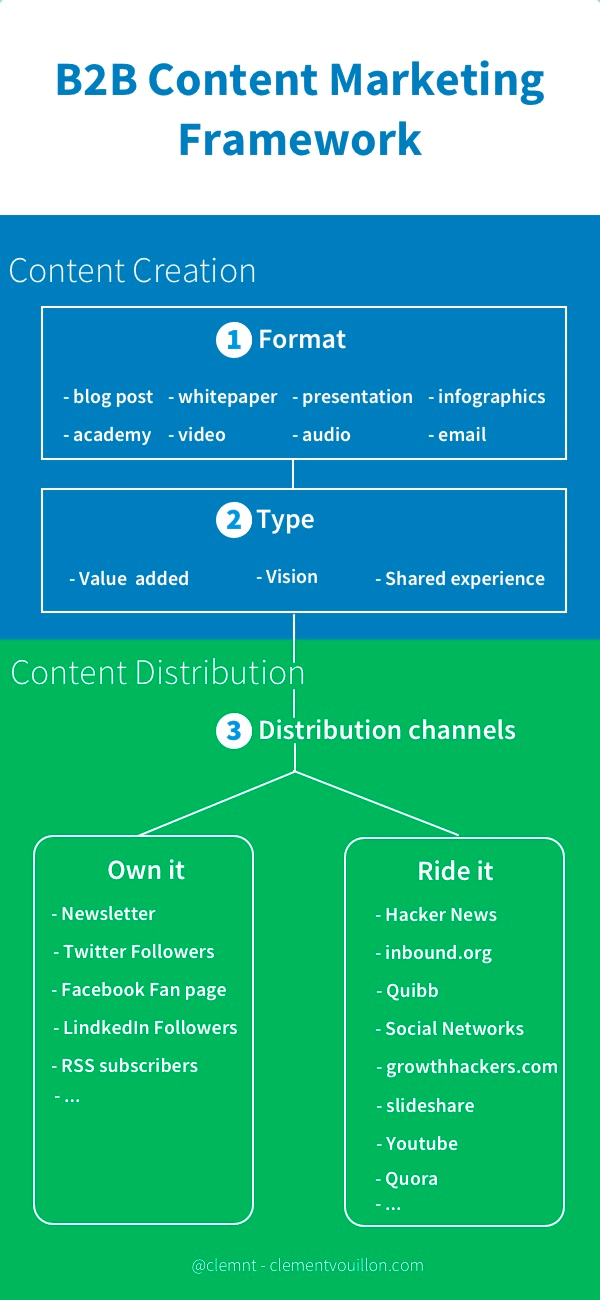
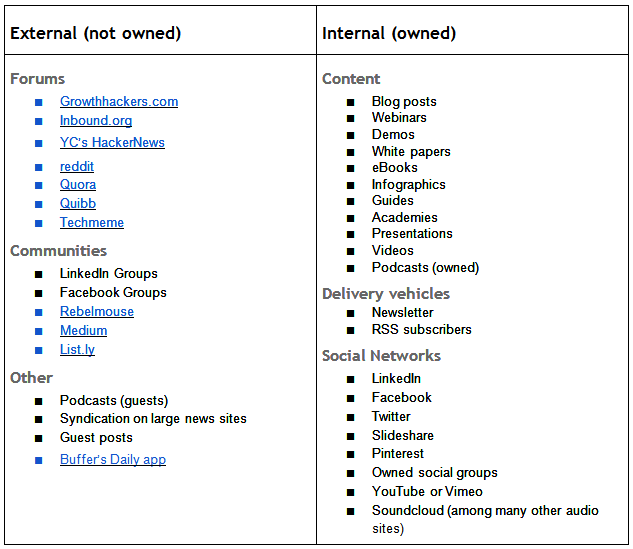
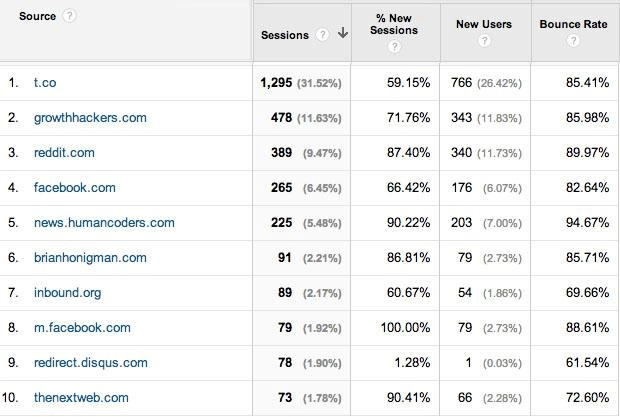
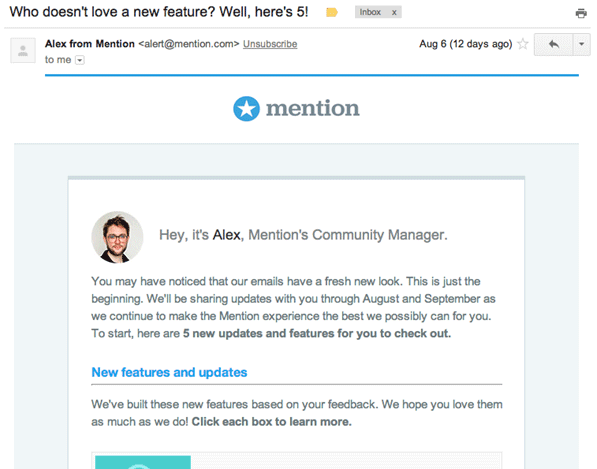

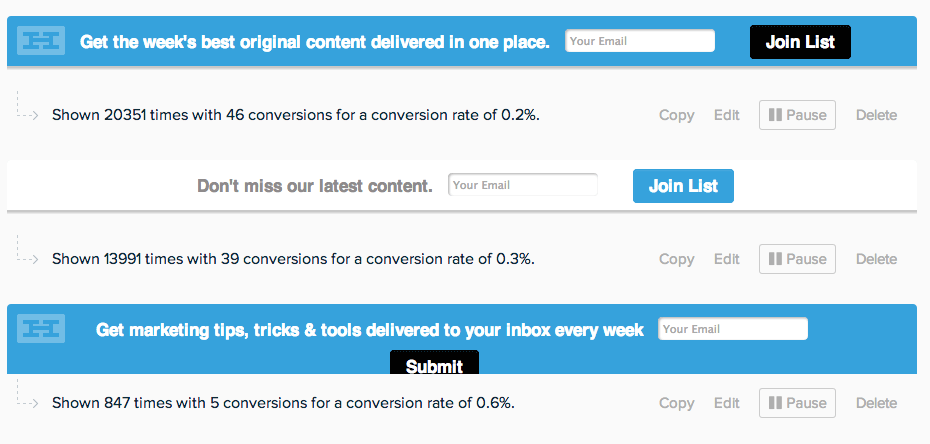

Comments (16)